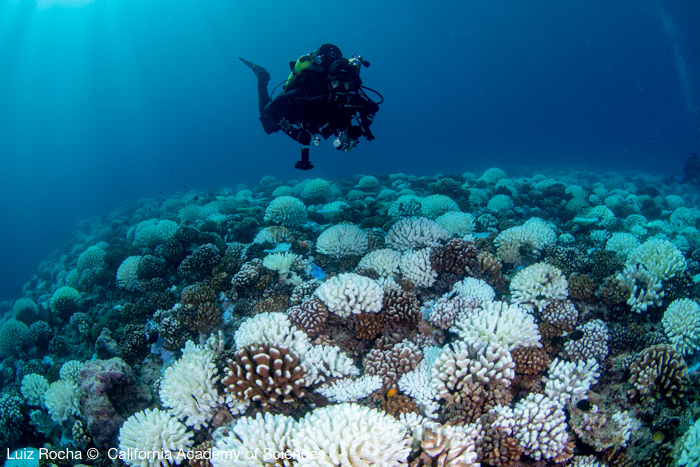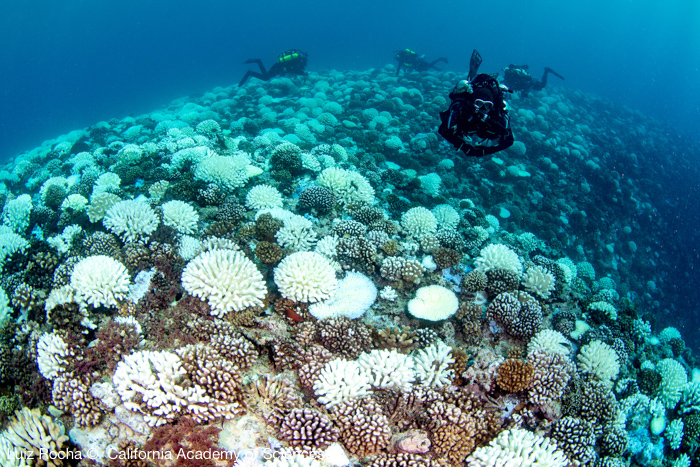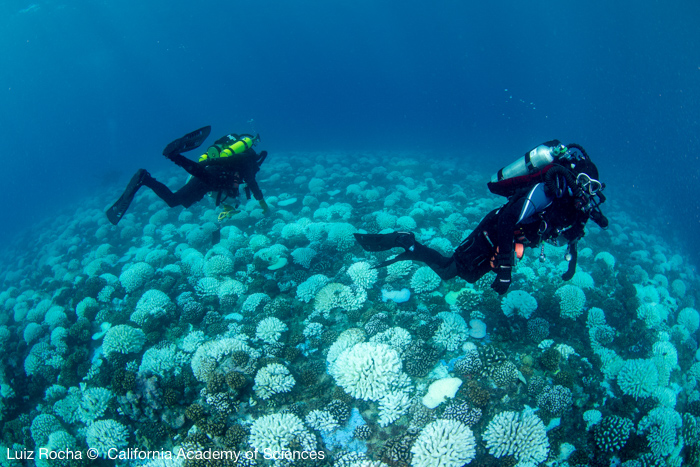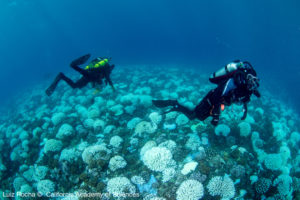 The French Polynesian islands of Tahiti and Moorea are reporting more than 50% of their coral reefs have been bleached. As water temperatures remain unusually high for this time of year, coral bleaching is occurring despite the absence of El Niño. Hollis Rebreathers Ambassadors and biologists from the California Academy of Sciences Mesophotic Dive Team visited the islands to witness first-hand the deterioration of the region’s coral reefs.
The French Polynesian islands of Tahiti and Moorea are reporting more than 50% of their coral reefs have been bleached. As water temperatures remain unusually high for this time of year, coral bleaching is occurring despite the absence of El Niño. Hollis Rebreathers Ambassadors and biologists from the California Academy of Sciences Mesophotic Dive Team visited the islands to witness first-hand the deterioration of the region’s coral reefs.
“I was overwhelmed by sadness because I saw these reefs looking really healthy just two months ago,” said Luiz Rocha, photographer and Curator of Fishes at California Academy of Sciences.
Coral bleaching occurs when high water temperatures cause the coral to expel its symbiotic algae, revealing the white skeleton beneath. In past years, coral bleaching events have occurred in shallow waters, but this year bleached corals have been discovered as deep as 100m.
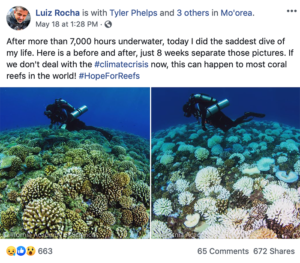 In March, the US National Oceanic and Atmospheric Administration issued a bleaching warning due to the water’s unusually warm temperature.
In March, the US National Oceanic and Atmospheric Administration issued a bleaching warning due to the water’s unusually warm temperature.
Rocha posted images of the bleached coral reefs to Facebook with this message:
“After more than 7,000 hours underwater, today I did the saddest dive of my life. Here is before and after, just 8 weeks separate those pictures. If we don’t deal with the #climatecrisis now, this can happen to most coral reefs in the world! #HopeForReefs.”
The reefs can survive and regain their symbiotic algae if the water temperature drops within the next week. However, scientists on the islands have yet to see a drop in temperature.
